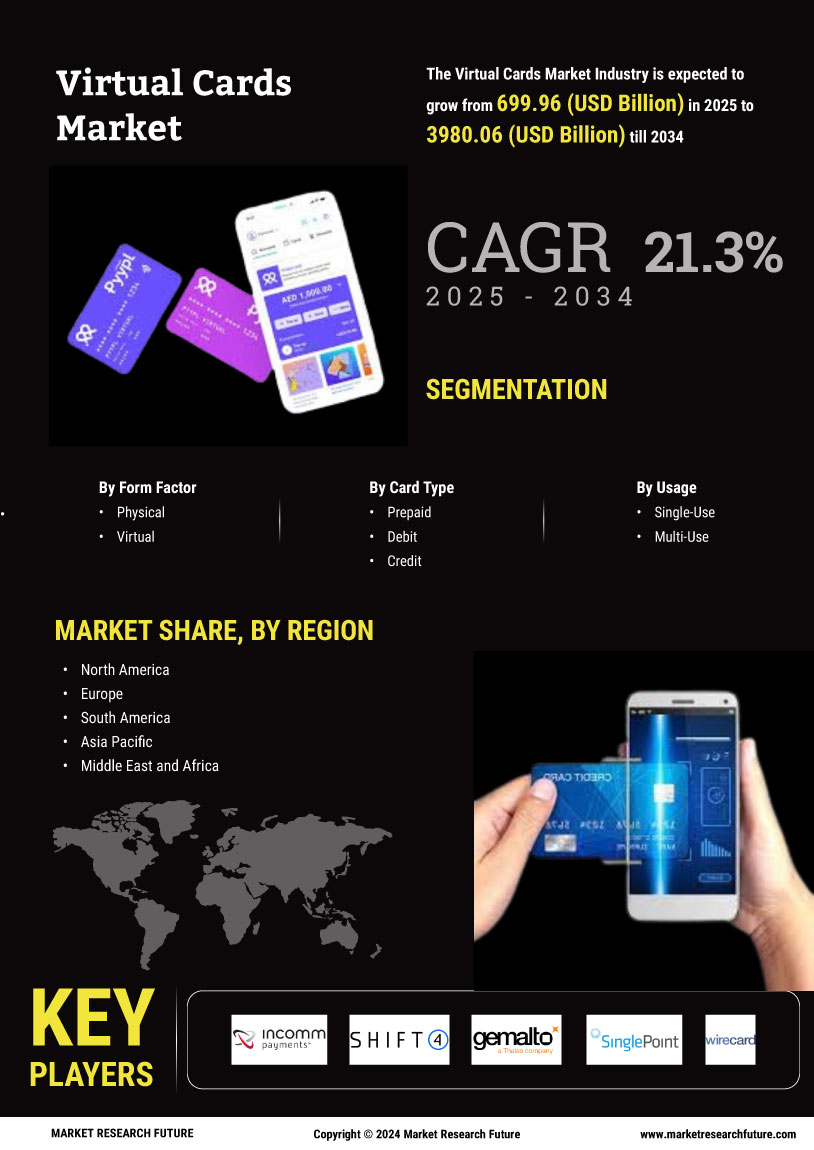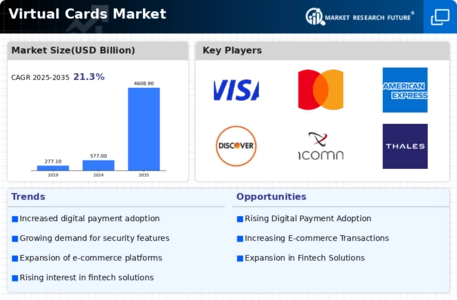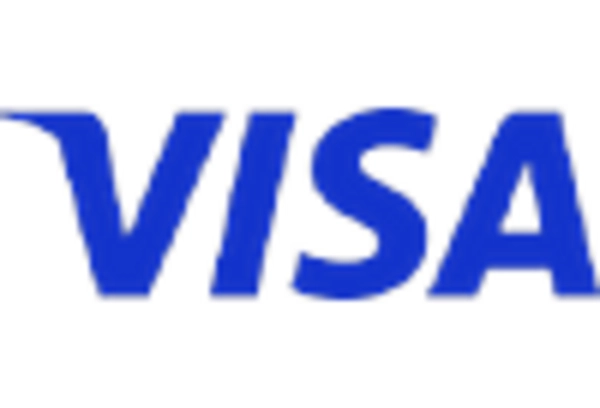Rising E-commerce Adoption
The increasing adoption of e-commerce platforms is a pivotal driver for the Virtual Cards Market. As consumers increasingly prefer online shopping, the demand for secure payment methods has surged. Virtual cards offer a layer of security that traditional cards may lack, thereby appealing to consumers wary of online fraud. According to recent data, e-commerce sales are projected to reach trillions of dollars, indicating a robust market for virtual payment solutions. This trend is likely to continue, as more businesses adopt e-commerce strategies, further propelling the Virtual Cards Market. The convenience and security offered by virtual cards align well with the evolving preferences of consumers, making them an attractive option for online transactions.
Growing Demand for Contactless Payments
The shift towards contactless payment methods is significantly influencing the Virtual Cards Market. As consumers seek faster and more convenient ways to transact, virtual cards provide an efficient solution that meets these needs. The rise in mobile payment applications and digital wallets has created an environment where virtual cards can thrive. Data suggests that contactless payments are expected to account for a substantial portion of all transactions in the coming years. This trend indicates a growing acceptance of virtual cards as a preferred payment method, particularly among younger demographics who prioritize speed and convenience. The Virtual Cards Market is likely to benefit from this ongoing transition towards contactless solutions.
Increased Focus on Financial Management Tools
The growing emphasis on personal finance management is driving the Virtual Cards Market. Consumers are increasingly seeking tools that help them manage their spending and budgeting effectively. Virtual cards often come with features that allow users to track their expenses in real-time, providing insights into their financial habits. This trend is particularly appealing to millennials and Gen Z, who are more inclined to utilize technology for financial management. As the demand for such tools rises, the Virtual Cards Market is expected to expand, offering innovative solutions that cater to these needs. The integration of budgeting features with virtual cards may further enhance their attractiveness to consumers.
Technological Advancements in Payment Solutions
Technological innovations are a key driver of the Virtual Cards Market. Advancements in payment technologies, such as blockchain and artificial intelligence, are enhancing the security and efficiency of virtual card transactions. These technologies not only improve transaction speed but also reduce the risk of fraud, making virtual cards a more appealing option for consumers. The integration of advanced security features, such as biometric authentication, is likely to further bolster consumer confidence in virtual cards. As technology continues to evolve, the Virtual Cards Market is expected to adapt and innovate, offering new features that meet the changing demands of consumers. This ongoing technological evolution may play a crucial role in shaping the future of the market.
Regulatory Support for Digital Payment Solutions
Regulatory frameworks are evolving to support the adoption of digital payment solutions, which is beneficial for the Virtual Cards Market. Governments and financial institutions are increasingly recognizing the importance of secure and efficient payment methods. Initiatives aimed at promoting digital transactions are likely to create a favorable environment for virtual cards. For instance, regulations that encourage the use of electronic payments can lead to increased consumer trust and adoption. This regulatory support may also facilitate partnerships between financial institutions and technology providers, further enhancing the offerings in the Virtual Cards Market. As regulations become more conducive to digital payments, the market is poised for growth.


















Leave a Comment